Monday, January 18, 2010
La Mennais Chapel
This our Small Chapel where as the La Mennais Brothers and Aspirants Meditate or to recite the Rosary and Night Prayer.
Subscribe to:
Post Comments (Atom)
Raphy Gordon

Gordon


| |||
|
| Our Foundation... Then and Now | |
| Preserving our faith-based legacy is a high priority; to do that, we must define that legacy, tend to it, and extend it throughout its facilities. This is necessary to remain faithful to the founding principles. On June 16, 1819, Jean Marie de la Mennais, vicar of Saint-Brieuc, and Gabriel Deshayes, pastor at Auray and vicar general of Vannes, formed the Brothers of Christian Instruction by signing a treaty uniting their efforts to educate the working class in impoverished France. They vowed to carry the message of the gospel and the rudiments of knowledge to every child in need throughout the region and received Catholic papal approval in 1890. The congregation of the Brothers of Christian Instruction grew rapidly, soon extending their mission into Bulgaria, Turkey, Egypt, Spain, England, Canada, and The United States. When the policies of the French government resulted in the Brothers' expulsion, their apostolic zeal led them to Canada in 1886. |
The Congregation of the Brothers of Christian Instruction has a coat-of-arms which affirms its identity, tells of its history, and proclaims its purpose. The upper half features a cross, bracketed by the initials D and S, which constitutes the traditional emblem of the Congregation. The olive branches suggest the spirit of peace and charity animating the Brothers in their mutual relations and in their dealings with others, especially their students. Below the armorial display is the Divine Master’s admonition to his disciples, Let the Children Come to Me. |  |
 | In 1951, the Brothers established La Mennais college in Alfred, Maine, with the purpose of instructing young men to become brothers and teachers. A chance comment by Brother Francoeur, who was the academic dean of La Mennais College to Monsignor William Hughes, principal of Cardinal Mooney High School in Youngstown at a summer course at Notre Dame in 1957, was that the Brothers were looking for a new location for La Mennais. Msgr Hughes mentioned the Youngstown Diocese as a possible location.
|
Who we are named for... In 1958, The Brothers of Christian Instruction obtained from is Excellency, the Most Reverend Emmet Walsh, Bishop of Youngstown, permission to open a liberal arts college for men in the Canton area, and is affiliated with Catholic University of America. Bishop Emmett Walsh invited the Brothers to settle in the Youngstown Diocese. When the Brothers found that the name they had chosen for their new college, Canton College, was already in use, they decided to name their new college for the man who gave them assistance in settling in this community. The bishop gave the brothers a gift of $350,000 toward the construction of the new college. |  |
 |
50 acres of land contained two buildings initially: The administration/instruction building, which housed offices, library, labs, classrooms, a cafeteria, and a student lounge. The faculty residence hall also housed a small number of student Brothers of Christian Instruction and contained a small chapel. |
| A residence for the Brothers (La Mennais Hall) emerged and the academic building (Farrell Hall), stood on the mostly bare grounds. La Mennais Hall continues to house the Brothers of Christian Instruction and international priest-students and serves as the offices for the Division of Language and Letters. |
|
 |
What is a Brother? They are teachers and administrators. They take vows of poverty, chastity, and obedience. They live in community. They are located around the world: Argentina, Benin, Bolivia, Canada, Chili’, Congo, CÔTE D'IVOIRE, England, France, French Polynesia, Haiti, Indonesia, Italy, Japan, Kenya, Phillipines, Rwanda, Senegal, Spain, Tanzania, Togo, Uganda, USA, Uruguay. Their main charism is teaching. |
In 1960, the Brothers open their new college in North Canton, Ohio. La Mennais College in Alfred, Maine, became Walsh College in North Canton, Ohio. Sixty-seven gentlemen were admitted to the school November 17, 1960. Now, more than 2,800 students attend Walsh University and its sister campuses in Akron, Medina, Canfield and Rome. |  |
 | Through good times and bad, a campus continues to grow. The small, Catholic college of two buildings and 50 acres in 1960 has grown to a University of 19 buildings, 140 acres, satellite campuses for working adults and more than 2800 students. |
|
|
 | December 19, 1961 – first issue of Walsh's student newspaper is released and called “The Spectator.” November 29, 1962 – Cavaliers is chosen as the official Walsh nickname. |
|
|
1962 – Women attend Walsh under a program operated by the Diocese to train lay teachers for elementary schools of the diocese – taught by the Ursuline sisters and Walsh faculty. By 1967, Walsh officially becomes co-ed. 1963-64 - Total enrollment: 412, including the 47 seniors. 1969 - Enrollment surpasses 1000. 2008-2009: Over 1350 returning part-time and full-time undergraduate students, 380 undergraduate students in the School for Professional Studies, 435 in the Graduate programs, and a projected 490 incoming Freshmen. |  |
| Walsh College becomes Walsh University in 1993. |
Large W for Walsh University, a cross, bracketed by the initials D and S, constitutes the traditional emblem of the Brothers of Christian Instruction. The crest is a Roman lamp with a red Chi-Rho indicating that each gradate is called by Christ to be a light of the world. The Motto “Sed Deus DatIncrementum” is from 1 Corinthians 3:7. The full text reads “Therefore, neither he that plants is anything, nor he that waters; but God that gives the increase.” This expresses the thought that, although the faculty give all they can to educate, they know that the flowering of their seed is from the Almighty God. | 
|
| |
 | In 2005, Walsh builds its first free-standing chapel, a long-standing vision for the campus. Until its construction, students attended Mass in a small chapel in the Rannou Campus Center (Now the Barrette Center). The Walsh University Chapel, Our Lady of Perpetual Help, is named in honor of the patroness of the Brothers of Christian Instruction. The Chapel houses the Division of Theology and the Chaplain’s office. |
 | College Hall circa 1960. |
College Hall (Farrell Hall) today. |  |
| |
 | Br. Ernest Paquet |
Br. Jerome Lessard |  |
 | Br. Guy Roddy |
Br. John Kalama |  |
 | Br. Marcel Sylvestre |
Br. Joseph Power |  |
|
Today, the Brothers of Christian Instruction, who number more then 1,300 in 25 countries, live out their commitment to providing a values-based Catholic education to all who seek it. To this day, Walsh University is proud that nearly 50% of our students are the first in their families to attend college. The Brothers hope to continue on their nearly 200-year-old mission of teaching students to become leaders in service to others.
|
| |
| Student Richard Jusseaume in 1967, Outstanding Academic Student shown with Brother Farrell, President of Walsh College. Jusseaume was the first student to obtain a 4.0 GPA, which he maintained through all 4 years at Walsh as an English major. |
|
 | Today, Richard Jusseaume is the 6th president of Walsh University. |

| ||||||||||||
|
|

| ||||||||||
|
| ||||||||||||||||||
|

~ 1860 ~
1) 05 January in Philadelphia, Pennsylvania (USA)
 JOHN NEPOMUCENE [JAN NEPOMUCKÝ] NEUMANN
JOHN NEPOMUCENE [JAN NEPOMUCKÝ] NEUMANN
professed priest, Redemptorists;
archbishop of Philadelphia;
founder, Sisters of Saint Francis of Philadelphia
born: 28 March 1811 in Prachatitz, Jihoceský kraj (Czech Republic)
competent diocese: Philadelphia/Ceské Budĕjovice
CCS protocol number: 855
type of cause: heroic virtues
opening of informative process: 1886
closing of informative process: 1888
decree on writings:
introduction of cause: 15 December 1895
opening of apostolic process: 25 October 1897
decree “non-cultu”: 28 June 1898
closing of apostolic process: 13 June 1902
decree on validity of informative and apostolic processes:
antepreparatory congregation: 16 May 1911
preparatory congregation: 08 April 1919
general congregation: 29 November 1921
promulgation of decree on heroic virtues: 11 December 1921
opening of informative process on first miracle for beatification:
closing of informative process on first miracle for beatification:
opening of informative process on second miracle for beatification:
closing of informative process on second miracle for beatification:
decree on validity of informative processes on miracles:
session of medical consultants:
antepreparatory congregation on miracles:
preparatory congregation on miracles:
general congregation on miracles:
promulgation of decree on miracles:
beatification: 13 October 1963
opening of cognitional process on miracle for beatification: 1971 (Philadelphia)
closing of cognitional process on miracle for beatification: 1971 (Philadelphia)
decree on validity of cognitional process on miracle: 26 October 1973
session of medical consultants:
commission of CCS officials and consultants: 01 June 1976
plenary session of CCS cardinals and bishops: 13 July 1976
papal confirmation of plenary session sentence:
promulgation of decree on miracle: 13 November 1976
perfecta ac diutina sanatione pueri Michaëlis Patricii Flanigan, annorum sex, ab incurabili sarcomate ab Ewing nuncupato dexterae tibiae, cum multiplici metastasi pulmonari bilaterali, et ascendentis partis maxillae sub finem mensis Decembris anni 1963 in valetudinarium Philadelphiense, vulgo appellatum Mercy Hospital
canonization: 19 June 1977
information: St. John Neumann Shrine, 1019 N. 5th St., Philadelphia, PA 19123, USA
Sisters of Saint Francis of Philadelphia, 609 S. Convent Road, Aston, PA 19014, USA
website:
2) 02 April in Padua (Italy)
 ELISABETTA VENDRAMINI
ELISABETTA VENDRAMINI
founder, Franciscan Elizabethan Sisters
born: 09 April 1790 in Bassano del Grappa, Vicenza (Italy)
competent diocese: Padua
CCS protocol number: 584
type of cause: heroic virtues
opening of diocesan inquiry:
closing of diocesan inquiry:
decree on writings: 02 April 1964
session of historical consultants: 10 March 1987
submission of Positio to CCS:
decree on validity of diocesan inquiry: 11 March 1988
congress of theological consultants: 28 June 1988
ordinary congregation of cardinals and bishops:
promulgation of decree on heroic virtues: 18 February 1989
opening of diocesan inquiry on miracle for beatification:
closing of diocesan inquiry on miracle for beatification:
decree on validity of diocesan inquiry on miracle: 21 April 1989
session of medical consultants: 15 November 1989
congress of theological consultants: 23 March 1990
ordinary congregation of cardinals and bishops: 19 June 1990
promulgation of decree on miracle: 10 July 1990
beatification: 04 November 1990
postulator: Fra Giovangiuseppe Califano, ofm
petitioner: Suore Francescane Elisabettine, Via Beato Pellegrino, 40, 35137 Padova, ITALY
website:
3) 15 April in Florence (Italy)
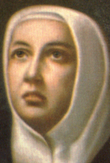 ANNA MARIA FIORELLI LAPINI
ANNA MARIA FIORELLI LAPINI
widow; founder, Poor Daughters of the Holy Stigmata of Saint Francis (n.o.)
born: 27 May 1809 in Florence (Italy)
competent diocese: Florence
CCS protocol number: 137
type of cause: heroic virtues
opening of informative process:
closing of informative process:
introduction of cause: 23 January 1918
decree “non-cultu”: 12 June 1918
opening of apostolic process:
closing of apostolic process:
decree on validity of informative and apostolic processes: 16 July 1938
decree on writings: 03 December 1944
submission of Positio to CCS: 1995
session of historical consultants:
congress of theological consultants: 25 February 2003
ordinary congregation of cardinals and bishops:
promulgation of decree on heroic virtues: 12 April 2003
opening of diocesan inquiry on miracle for beatification:
closing of diocesan inquiry on miracle for beatification:
decree on validity of diocesan inquiry on miracle: 24 June 1994
session of medical consultants: 22 April 2004
postulator: Fra Giovangiuseppe Califano, ofm
petitioner: Povere Figlie delle Sacre Stimmate, Viale del Forte Trionfale, 26, 00135 Roma, ITALY
website:
4) 22 May in Verona (Italy)
 TEODORA CAMPOSTRINI
TEODORA CAMPOSTRINI
founder, Minim Sisters of Charity of Our Lady of Sorrows (n.o.)
born: 26 October 1788 in Verona (Italy)
competent diocese: Verona
CCS protocol number: 1036
type of cause: heroic virtues
opening of informative process:
closing of informative process:
decree on writings: 21 December 1968
introduction of cause:
decree “non-cultu”:
opening of apostolic process:
closing of apostolic process:
decree on validity of informative and apostolic processes:
submission of Positio to CCS:
session of historical consultants:
congress of theological consultants:
ordinary congregation of cardinals and bishops:
postulator:
petitioner: Sorelle Minime della Carità di Maria Addolorata, Via S. Maria in Organo, 2, 37129 Verona, ITALY
website:
5) 18 June in Zahleh, Al Biqā‘ (Lebanon)

EDOUARD BILLOTET AND 4 JESUIT COMPANIONS OF ZAHLÉ
EDOUARD BILLOTET
professed priest, Jesuits
born: 23 May 1812 in Villefrancon, Haute-Saône (France)
FERDINANDO BONACINA
professed religious, Jesuits
born: 07 April 1804 in Gavassetto, Reggio Emilia (Italy)
ELYĀS YŪNES (الياس يونس)
professed religious, Jesuits
born: 1830 in El Metn, Jabal Lubnān (Lebanon)
HABĪB MAKSŪD (ﺣﺒﻳﺐ ﻣﻜﺴﻮﺫ)
professed religious, Jesuits
born: 27 September 1810 in Zahleh, Al Biqā‘ (Lebanon)
ĀLFŪNS HAYDAR HUBAYSH (ألفونس حبيش حيدر)
professed religious, Jesuits
born: 31 May 1815 in Ghazīr, Kesrwan, Jabal Lubnān (Lebanon)
competent diocese: Alep of the Latins
CCS protocol number: 441
type of cause: martyrdom
opening of informative process: 12 October 1932
closing of informative process:
nihil obstat:
decree on validity of informative process:
submission of Positio to CCS:
session of historical consultants:
congress of theological consultants:
ordinary congregation of cardinals and bishops:
postulator:
petitioner: Pères Jésuites, Rue de l’Université Saint-Joseph, BP 166 775 – Achrafieh, Beyrouth, 110 2150 LEBANON
website:
6) 23 June in Turin (Italy)
 GIUSEPPE CAFASSO
GIUSEPPE CAFASSO
priest of the archdiocese of Turin
born: 15 January 1811 in Castelnuovo d’Asti (Italy)
competent diocese: Turin
CCS protocol number: 409
type of cause: heroic virtues
opening of informative process:
closing of informative process:
decree on writings:
introduction of cause: 23 May 1906
decree “non cultu”:
opening of apostolic process:
closing of apostolic process:
decree on validity of informative and apostolic processes:
antepreparatory congregation:
preparatory congregation:
general congregation:
promulgation of decree on heroic virtues: 27 February 1921
opening of informative process on first miracle for beatification:
closing of informative process on first miracle for beatification:
opening of informative process on second miracle for beatification:
closing of informative process on second miracle for beatification:
decree on validity of informative processes on miracles:
session of medical consultants:
antepreparatory congregation on miracles:
preparatory congregation on miracles:
general congregation on miracles:
promulgation of decree on miracles:
beatification: 03 May 1925
opening of informative process on first miracle for canonization:
closing of informative process on first miracle for canonization:
opening of informative process on second miracle for canonization:
closing of informative process on second miracle for canonization:
decree on validity of informative processes on miracles:
session of medical consultants:
antepreparatory congregation on miracles:
preparatory congregation on miracles:
general congregation on miracles:
promulgation of decree on miracles:
canonization: 22 June 1947
information: Santuario della Consolata, Via M. Adelaide, 2, 10122 Torino, ITALY
website:
7) 9-10 July in Damascus (Syria)


MANUEL RUIZ LÓPEZ AND 7 COMPANION MARTYRS
FROM THE FRANCISCAN FRIARS MINOR OF DAMASCUS
ALONG WITH FRANSĪS, ‘ABD AL-MU‛TĪ, AND RŪFAYĪLMASĀBKĪ
MANUEL RUIZ LÓPEZ
professed priest, Franciscan Friars Minor
born: 05 May 1804 in San Martín de Ollas, Burgos (Spain)
CARMELO BOLTA BAÑULS
professed priest, Franciscan Friars Minor
born: 29 March 1803 in Borjas, Gandía, Valencia (Spain)
ENGELBERT KOLLAND
professed priest, Franciscan Friars Minor
born: 21 September 1827 in Ramsau, Zell am See, Salzburg (Austria)
NICANOR ASCANIO DE SORIA
professed priest, Franciscan Friars Minor
born: 10 January 1814 in Villarejo de Salvanés, Madrid (Spain)
PEDRO SOLER MÉNDEZ
professed priest, Franciscan Friars Minor
born: 28 April 1827 in Lorca, Murcia (Spain)
NICOLÁS MARÍA ALBERCA TORRES
professed priest, Franciscan Friars Minor
born: 10 September 1830 in Aguilar de la Frontera, Córdoba (Spain)
FRANCISCO PINAZO PEÑALVER
professed religious, Franciscan Friars Minor
born: 26 August 1802 in Chopo, Alpuente, Valencia (Spain)
JUAN JACOBO FERNÁNDEZ y FERNÁNDEZ
professed religious, Franciscan Friars Minor
born: 25 July 1808 in Moire, Carballeda, Orense (Spain)
FRANSĪS MASĀBKĪ (ﻲﻗﺑﺎﺳﻣ ﺱﻳﺳﻧﺮﻓ) (*)
layperson of the archeparchy of Damascus of the Maronites; married
born: ? in Damascus (Syria)
‘ABD AL-MU‛TĪ MASĀBKĪ (ﻲﻗﺑ ﺎﺳﻣ ﻲﺗﻣﻟﺍ ﺩﺒﻋ) (*)
layperson of the archeparchy of Damascus of the Maronites; married
born: ? in Damascus (Syria)
RŪFAYĪL MASĀBKĪ (ﻲﻗﺑﺎﺳﻣ ﻝﻳﺌﺎﻓﻭﺮ) (*)
layperson of the archeparchy of Damascus of the Maronites
born: ? in Damascus (Syria)
competent diocese: Damascus of the Latins/Damascus of the Maronites
CCS protocol number: 1740
type of cause: martyrdom
opening of informative process:
closing of informative process:
introduction of cause: 17 December 1885
opening of apostolic process:
closing of apostolic process:
decree on validity of informative and apostolic processes: 11 June 1924
decree on writings: 23 July 1924
decree “non cultu”: 23 July 1924
antepreparatory congregation: 18 August 1925
preparatory congregation: 19 January 1926
general congregation: 17 April 1926
promulgation of decree on martyrdom: 02 May 1926; 07 October 1926 (*)
beatification: 10 October 1926
postulator: Fra Giovangiuseppe Califano, ofm
petitioner: St. Saviour’s Monastery, St. Francis St., 1, P.O. Box 186, 91001 Jerusalem, ISRAEL
[1895: Salvatore Lilli from Cappadocia and 7 Armenian Companion Martyrs]
website:
8) 31 July in Zula, Semenawi Keih Bahri (Eritrea)
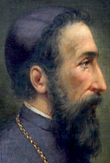 GIUSTINO DE JACOBIS
GIUSTINO DE JACOBIS
professed priest, Vincentians;
apostolic vicar of Abyssinia (now Addis Ababa)
born: 09 October 1800 in San Fele, Potenza (Italy)
competent diocese: Addis Ababa
CCS protocol number: 9
type of cause: heroic virtues
opening of informative process: 1891
closing of informative process: 1894
decree on writings: 01 May 1902
introduction of cause: 13 July 1904
decree “non cultu”: 28 June 1905
opening of apostolic process: 1904
closing of apostolic process: 1913
decree on validity of informative and apostolic processes: 09 December 1915
antepreparatory congregation: 02 June 1931
preparatory congregation: 09 April 1935
general congregation: 16 July 1935
promulgation of decree on heroic virtues: 28 July 1935
opening of informative process on first miracle for beatification:
closing of informative process on first miracle for beatification:
opening of informative process on second miracle for beatification:
closing of informative process on second miracle for beatification:
decree on validity of informative processes on miracles:
session of medical consultants:
antepreparatory congregation on miracles:
preparatory congregation on miracles:
general congregation on miracles:
promulgation of decree on miracles:
beatification: 25 June 1939
opening of cognitional process on miracle for beatification:
closing of cognitional process on miracle for beatification:
decree on validity of cognitional process on miracle:
session of medical consultants:
commission of CCS officials and consultants:
plenary session of CCS cardinals and bishops:
papal confirmation of plenary session sentence:
promulgation of decree on miracle:
canonization: 26 October 1975
information: St. Justin de Jacobis v. Provincial House, P.O. Box 364, Asmara, ERITREA
website:
9) 10 August in Agrigento (Italy)
professed religious, Redemptorists
born: 06 October 1793 in Maschito, Potenza (Italy)
competent diocese: Agrigento
CCS protocol number:
type of cause: heroic virtues
nihil obstat:
opening of informative process:
closing of informative process:
postulator: Rev. Antonio Marrazzo, cssr
petitioner: Associazione Pro Loco “Fra Rosario Adduca”, Via Dante, 25, 85020 Agrigento, ITALY
website:
10) 11 October in Rome (Italy)
 JÓZEFA KARSKA (MARIA JÓZEFA OF JESUS CRUCIFIED)
JÓZEFA KARSKA (MARIA JÓZEFA OF JESUS CRUCIFIED)
cofounder, Sisters of the Immaculate Conception of the Blessed Virgin
born: 07 April 1823 in Olchowiec, Lubuskie (Poland)
competent diocese: Warsaw
CCS protocol number: 580
type of cause: heroic virtues
opening of informative process:
closing of informative process:
nihil obstat:
decree on validity of informative process:
submission of Positio to CCS:
session of historical consultants:
congress of theological consultants:
ordinary congregation of cardinals and bishops:
postulator: Fra Zbigniew Suchecki, ofmconv
petitioner: [see 1911:Marcelina Darowska (Maria Marcelina of the Immaculate Conception)]
website:
Note: The decree to translate the transumptum into French was issued on 06 November 1970.
11) 29 October in Secondigliano, Naples (Italy)
 GAETANO ERRICO
GAETANO ERRICO
priest of the archdiocese of Naples;
founder, Missionaries of the Sacred Hearts of Jesus and Mary
born: 19 October 1791 in Secondigliano, Naples (Italy)
competent diocese: Naples
CCS protocol number: 818
type of cause: heroic virtues
opening of informative process:
closing of informative process:
decree on writings:
introduction of cause: 18 December 1884
decree “non cultu”:
opening of apostolic process:
closing of apostolic process:
decree on validity of informative and apostolic processes:
antepreparatory congregation:
preparatory congregation:
general congregation:
promulgation of decree on heroic virtues: 04 October 1974
opening of diocesan inquiry on miracle for beatification: 07 July 1999
closing of diocesan inquiry on miracle for beatification: 15 October 1999
decree on validity of diocesan inquiry on miracle: 10 December 1999
session of medical consultants: 30 March 2000
congress of theological consultants: 03 July 2000
ordinary congregation of cardinals and bishops: 09 January 2000
promulgation of decree on miracle: 24 April 2000
beatification: 14 April 2002
opening of diocesan inquiry on miracle for canonization: 10 November 2004 (archdiocese of Naples)
closing of diocesan inquiry on miracle for canonization: 10 October 2005 (archdiocese of Naples)
decree on validity of diocesan inquiry on miracle: 20 January 2006
session of medical consultants: 05 October 2006
congress of theological consultants: 19 December 2006
ordinary congregation of cardinals and bishops: 05 June 2007
promulgation of decree on miracle: 06 July 2007
spontanea sanatione dominae Annae Russo, anno 2003 in Secundiliano, a "sterilità primaria da anavulazione cronica, resistenete alla terapia medica chirurgica, in paziente con utero unicorene-unicolle rudimentale, esitata in gravidanza insorta spontaneamente e proseguita con evoluzione fisiologica con parto pretermine all 36a settimana, senza alcuna trattamento."
canonization: 12 October 2008
information: Missionari dei Sacri Cuori di Gesù e di Maria, Via dei Falegnami, 23, 00186 Roma, ITALY
Missionari dei Sacri Cuori di Gesù e di Maria, Via Dante, 2, 80144 Secondigliano (NA), ITALY
[1898: Raffaele Mennella]
website: www.msscc.it
12) 03 December in Trent (Italy)
 JOHANN NEPOMUK VON TSCHIDERER VON GLEIFHEIM
JOHANN NEPOMUK VON TSCHIDERER VON GLEIFHEIM
bishop of Trent
born: 15 April 1777 in Bolzano (Italy)
competent diocese: Trent
CCS protocol number: 404
type of cause: heroic virtues
opening of informative process: 1873
closing of informative process: 1877
decree on writings: 16 April 1885
introduction of cause: 27 May 1886
decree “non cultu”: 14 March 1890
opening of apostolic process: 1890
closing of apostolic process: 1896
decree on validity of informative and apostolic processes: 03 July 1898
antepreparatory congregation: 21 February 1905
preparatory congregation: 1937
general congregation: 18 June 1943
promulgation of decree on heroic virtues: 14 July 1968
opening of informative process on miracle for beatification: 1908
closing of informative process on miracle for beatification: 1908
decree on validity of diocesan inquiry on miracle: 27 September 1908
session of medical consultants: 01 April 1992
congress of theological consultants: 19 June 1992
ordinary congregation of cardinals and bishops: 03 November 1992
promulgation of decree on miracle: 21 December 1992
beatification: 29 April 1995
postulator:
petitioner: Arcidiocesi di Trento, P.za Fierra 1, 38100 Trento, ITALY
website:
13) 21 December in Koblenz (Germany)
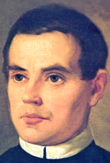 PETER FRIEDHOFEN
PETER FRIEDHOFEN
founder, Brothers of Mercy of Our Lady of Perpetual Help
born: 25 February 1819 in Weitersburg, Vallendar (Germany)
competent diocese: Trier
CCS protocol number: 401
type of cause: heroic virtues
opening of informative process: 26 March 1926
closing of informative process:
session of historical consultants: 06 May 1981
submission of Positio to CCS: 1983
congress of theological consultants: 03 May 1983
ordinary congregation of cardinals and bishops: 05 July 1983
promulgation of decree on heroic virtues: 24 September 1983
opening of diocesan inquiry on miracle for beatification:
closing of diocesan inquiry on miracle for beatification:
decree on validity of diocesan inquiry on miracle: 18 February 1983
session of medical consultants: 06 April 1984
congress of theological consultants: 17 July 1984
ordinary congregation of cardinals and bishops: 20 November 1984
promulgation of decree on miracle: 14 December 1984
beatification: 23 June 1985
postulator:
petitioner: Barmherzige Brüder von Maria-Hilf, Nordallee 1, 54292 Trier, GERMANY
website: www.brueder-von-maria-hilf.de
14) 26 December in Ploërmel, Morbihan (France)
 JEAN-MARIE ROBERT DE LA MENNAIS
JEAN-MARIE ROBERT DE LA MENNAIS
priest of the diocese of Vannes;
founder, Brothers of Christian Instruction of Ploërmel
and Daughters of Providence of Saint-Brieuc
born: 08 September 1780 Saint-Malo, Ille-et-Vilaine (France)
competent diocese: Vannes
CCS protocol number: 426
type of cause: heroic virtues
opening of informative process: 07 October 1899
closing of informative process: 29 August 1901
decree on writings: 11 December 1907
introduction of cause: 22 March 1911
opening of apostolic process: 31 July 1912
decree “non cultu”: 10 March 1915
closing of apostolic process: 1927
decree on validity of informative and apostolic processes: 05 June 1936
antepreparatory congregation: 23 July 1946
preparatory congregation: 25 May 1965
general congregation: 21 June 1966
promulgation of decree on heroic virtues: 15 December 1966
opening of diocesan inquiry on miracle for beatification: 13 November 2009 (archdiocese of Buenos Aires)
closing of diocesan inquiry on miracle for beatification: 17 December 2009 (archdiocese of Buenos Aires)
decree on validity of diocesan inquiry on miracle:
postulator: Bro. Delfín López, ficp
petitioner: Frères de l’Instruction Chrétienne de Ploërmel, 1 bd Foch, BP 35, 56801 Ploërmel, FRANCE
Filles de la Providence de Saint-Brieuc, 36, ave. de Fontainebleau, 94270 Le Kremlin-Bicêtre, FRANCE
website: www.lamennais.org
|


| |||||
|


| ||||||||||||||||||||||||||||||||||||||||||
|

 |
Kid brother Cyprian (1816-1897) General Superior from 1861 to 1897 |

 |
Gaudichon brother Abel (1845-1910) of Superior General from 1897 to 1909. |

 |
Brother John Joseph Quirion (1866-1957) Superior General from 1909 to 1933 

Superior General from 1970 to 1982 | ||||||||||||||||||||||

| ||||||||||||||||||||||

 |
Brother Jose Antonio Obeso Superior General from 1994 to 2006  
| ||||||||
| ||||
|
| |||
|
| |||
|
| |||
|

|

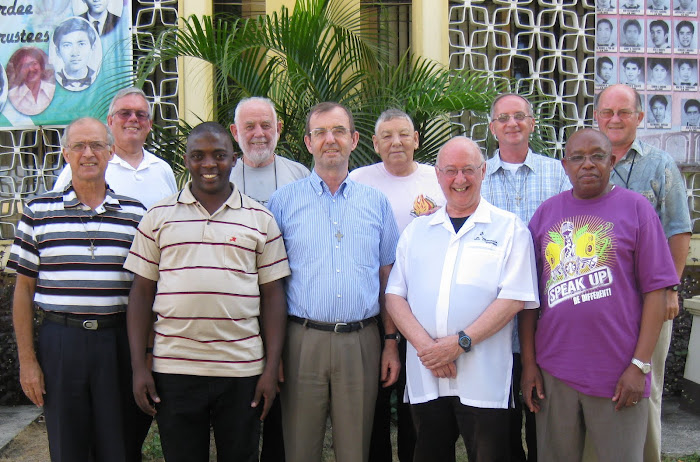

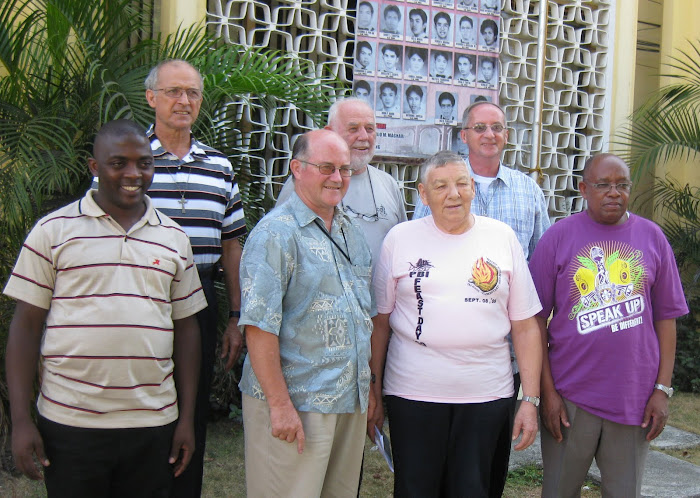

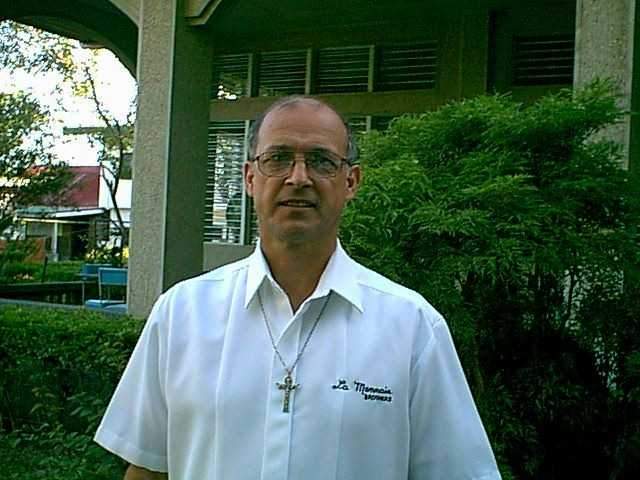



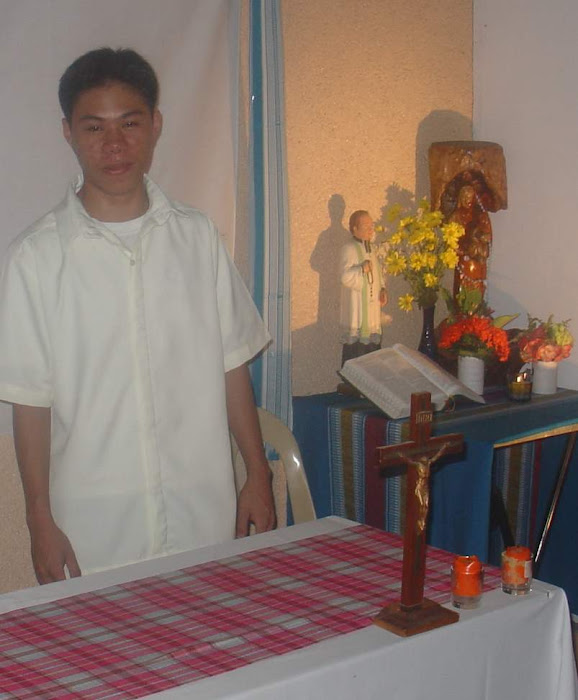

GDU.jpg)

|
| ||||||||||||||||||||||||||
|
| ||||||||||||||||||||||||||||||||||||||||||||||||||||||||||||||
|
| ||||||||||||
|





“DREAM COME TRUE”
BY: JOHNNY BALENA {LMB ASPIRANT}
Every one of us has his own dreams and goals to fulfill in future. So one day, we can say “I have made it successfully”. Also personally, I have my own dreams and goals to accomplish. My motto is “if others can do it why not me”. My vocation came when Nong Bobot came to
A month later, I got a letter from Nong Bobot that I had passed and was invited for the summer camp. I was very happy beyond expression. The summer camp was last April 19-24, 2009. The first day of the summer camp we went to USA Iloilo for Placement Exam.
During the summer camp, I enjoyed all the activities such us, games with kids, swimming and delicious foods and drinks. We enjoyed staying with the LMBrothers. The beach was enjoyable despites it rained during that time. At the end of the summer camp we received a “certificate” and we were given the home visitation schedule. Br. Eugene and Nong Bobot came for home visitation, brought my
On June 14, 2009, I arrived at Iloilo-formation house despite being my first time I was not nervous. I was welcomed by the Aspirants and showed my room. “Bravo I had made it”, I said to my self. In the evening we had the rosary and evening prayers followed by supper. After supper we had chores and computer typing. I don’t spend much time on the computer because I have astigmatism. As of now I have adjusted to the schedule of the house, to deal with other Aspirant and most of all to the environment because it is different from Antique.
During weekends; Sunday afternoon we are free, I do what I want like going to SM City, ROBINSON’S Place, GAISANO, MARY MART and SUPERMART. We tour around
My First Catechesis
| L |
I am also in my third year as a student, as a student I learned a lot in each courses that I have. I learned experiences in my daily struggles. All my teachers were so understandable and supportive. This year I was surprised and challenged knowing that I have to get Theo 109, with the description of Introduction to Catechesis under our teacher, Professor Reynold Navares. As my first time to conduct catechesis, I was so eager to have it; to teach the good news to other people. Yes! I will be a catechist…. (For I was told to teach a high school!) Now I can use my learned knowledge and formation as a religious to teach my students. But later I was informed that I will be teaching Elementary pupil. I was shocked! How this could be? I will be teaching grade 1? Ah! It’s a great trouble in me! For grade 1 pupil are not interested in this field. How can I introduce Christ to them? I know this is the foundation of their learning. I might have difficulty to mingle with them and most of all to introduce Christ in their life. Teaching Catechesis in a Grade 1 is not an easy type of work, it needs patience perseverance, humility and most of all a loving heart to be with the little children. Catechesis with the young children in this generation needs great attention, for young children’s right are deprived by immoral issues and conduct of this modern technological age.
As I had my first class with my students, I was very happy seeing them enjoying in my class and participating in every activity I had. In addition, I am very grateful for I become part of their life and a contributor of their knowledge. I thank God, for the strength and courage He has bestowed on me, to reveal Himself to the little ones.
By: Edsil V. Sigue
| I |
n that afternoon when we arrived in
| L |
ast summer, when we had our summer class, little by little I learned how to adjust as an Augustinian student. I didn’t
expect that we were now in
| I |
also familiarized myself to the city. We go on shopping at SM, Gaisano and Robinson, before, I have no idea what a city is because I live in the
| A |
s a third year aspirant, I am Edsil Villarosa Sigue, I’m very lucky that I entered here in the house of formation, under Br. Eugene Mwesigye our formator and Br. Andrei Poisson our assistant formator , because among the youth we were chosen as an aspirant. I am happy because the brothers are helping and forming us to become a brother in the future. Here in the house of formation we are far from bad influence like drinking alcoholic and smoking. Here we are living more comfortable than the others who are in the boarding houses. I thank very much for the founder, the brothers, and benefactors and to God because this congregation help me to become closer to God.
| N |
ow as a third year aspirant of the La Mennais Brothers and also third year college student. I’m studying at the
“My experience before Christmas this 2009”
By: Johnny Baleña
(La Mennais Brothers’ Aspirant)
Christmas, yes it’s Christmas the day when Christ our savior was born or what we call the “Incarnation” when the “Word” was made flesh. Before Christmas we are busy preparing and decorating our homes but some of us forget what the highlight of Christmas. My own opinion for us is to prepare and to decorate our hearts by means of reconciliation of our past sins and doing well for the coming of the Messiah. We always remember and give value during the month of December having special Masses, what we call “Missa de Gallo” in Filipino term it is called “Simbang Gabi” and it has becomes a Filipino tradition.
I had finished my Prelim Exam for the second Semester at the University on December 16, 2009. And I had finished also the Christmas Party at school. Then I asked my self, what activities I ought to be able to accomplish before the end of t he year. On17th day of December, in the afternoon I, with my fellow Aspirants and Tita Babes, our teacher in Guitar lessons, we came together and we had a practice of sing even though we are not good singers but we did our best as to participate, during the evenings for our Christmas Carol at the
The Brothers were the ones who provided the service for us. We would leave the Formation house at exactly 6:00 in the evening, to start Mass at 7:00 pm before we would start our Christmas Carol. We started our Christmas Carol at exactly 8:00 pm and ended at 10pm. The next day, 18th of December, we wake up at 4:00 am then prepared ourselves for the Simbang Gabi, starting at 4:30 am and ending at 5:30 am. From the16th of December; we were having our Masses at the Dominican Sisters near our Formation House. And after Mass we would say our Morning praises, after which we would have our Breakfast then performing our assigned chores. After our chores, we would go to sleep; until the afternoon we are free because we had no any schedule.On 19th of December we went to Guimaras together with Bros. Eugene and André, we left our house at 7:00 am and arrived there at exactly 8:00 am. We toured around the
And on 20th of December we had a Recollection facilitated by Bro. André, which started at 9:00 in the morning until in the afternoon. On 21st of December we had our Christmas Party with the Brothers. We all enjoyed the celebration and of course eating; as well it is was the last day of our Christmas Carol. 22nd of December we were in charge for the “Readings” of the Mass at the Sisters’ Chapel and after, Mass we had Breakfast then we went home (home sweet home).
The year was nearly ending, and I thanked God for the help and the blessings. I successfully accomplished many things in 2009.And also I had a lot of unforgettable experiences in the year 2009 most especially the Christmas. The year ended but I have kept many memories for it. It is all because my “experiences are one way of learning.”
All of us have our own reason why we keep going in life. And we are aiming for something to happen in the future. Every moment in our life we build step by step. This makes us to be successful in life.
We as Aspirants of La Mennais Brothers, live in community and are prepared and taught values in life that will lead us to be future Brothers. Thus, we follow on what Jesus said to his Apostles “come and follow me…” We are aspiring to become Religious Educators, to live in a community and willing to follow Christ and serve his church. The La Mennais Brothers are an International Congregation that serves 25 countries.

We are grateful to God who brought us the La Mennais Brothers who encourage us to discover our personal call by living the Brother’s motto that says “Deo Soli” meaning “God Alone”. The Brothers are “Consecrated Educators” sent to bring Christ’s love to the youth”; they are known as Religious Educators, youth instructors as well as Evangelizers. They leave their families to serve God and his people. How amazing it is to offer your life to God.
We were lucky to have Brothers that guide and help us to grow in faith and to love Christ. We are Aspirants who live with them, to follow what the Brothers teach us, we would like to become Brothers like them: offering our lives to God through prayers and actions. We should know how to interact and learn to associate with each other, so that in the future we will be aware that we will be facing different faces and dealing other peoples. Isn’t this our dream to become Brothers? But my exact dream is to be with God forever. So, what am I waiting for? “Come and follow me…..” says Jesus Christ.
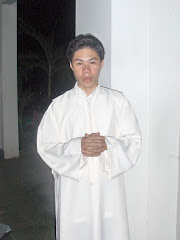


No comments:
Post a Comment